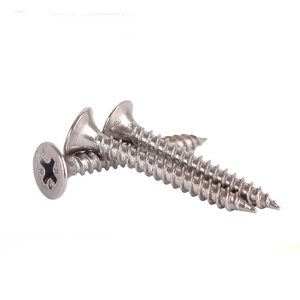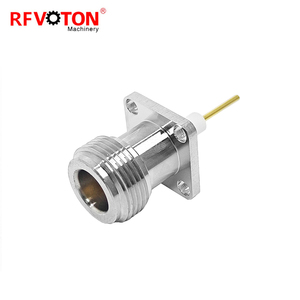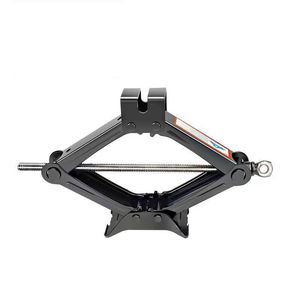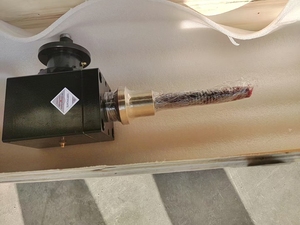
All categories
Featured selections
Trade Assurance
Buyer Central
Help Center
Get the app
Become a supplier

(1003 products available)







































Small screw jacks are available in many types, each serving a specific purpose and function. Their wide applicability as adjustable lifting devices in commercial settings necessitates this classification. Here is a rundown of the different types of small screw jacks.
Manual small screw jacks are controlled by hand operations; thus, they are mainly used in areas where the load will not require constant lifting or movement. They have a hand-crank or screw mechanism made from solid steel that enables the user to make adjustments and ensure the load has the desired height. This jack type is still commonly employed in industries where power sources cannot be readily accessible or where costs must be minimized.
It is the other way around for screw jacks, where a manual jack is operated using an electric motor. Electric small screw jacks, where efficiency and speed matter, are often used. They are appropriate for vertical operations like lifting loads in warehouses. These jacks have small motors to lift weight and keep the setpoint through feedback sensors even after constant variations. Operating an electric screw jack typically requires less physical effort than working with a manual screw jack.
A screw jack is mounted to a small trolley, enhancing mobility. Trolley small screw jacks are ideal for large or open work areas where numerous operations should be realized without being fixed in one location. They are operated by human power, electricity, or pneumatics and are perfect where heavy items must be lifted but moved at the same time. While these jacks are suitable for lifting, they also have the added function of being transportable within the workspace.
Precision screw jacks are designed to provide very fine adjustments when needed. These are widely employed in engineering and aerospace applications, where one millimeter difference can mean everything. These jacks come with fine-pitch screws and sensitive control mechanisms, which allow for extremely accurate positioning. Other industries where these types of jacks are common include medical equipment assembly and optical system installation.
Multi-stage screw jacks consist of more than one screw section, which is very useful because the height of the operation can be adjusted to several levels. Multi-stage small screw jacks work perfectly in these situations, which require an extremely high lift for construction work, such as materials handling within warehouses. They may be either manual or powered with electric motors, depending on the load requirements, and typically have impressive lifting capabilities.
The durability of small screw jacks depends on the materials used to manufacture them and the construction design employed. Considering the operating environment and the loads expected, selecting an appropriate small screw jack is necessary for long life.
One of the most frequent materials used in making small screw jacks is stainless steel because it is hard, corrosion-resistant, and extremely strong. Stainless steel is used within environments where humidity, chemicals, or extreme temperatures are present, as found in the food processing, marine, and pharmaceutical industries. In addition to providing strength, the resistance to corrosion ensures that small screw jacks will continue to function effectively, even in harsh environments.
Aluminium alloys are used when there is a need to fix the mobilization of screw jacks since aluminium, though soft, is lighter than most metals. Such smaller appliances are used in field operations or transport facilities; they should be easy to manipulate and move. While aluminium alloys are not as strong as other materials, the addition of alloys makes them suitable for use in lightweight but strong constructions.
Brass is used in some small screw jacks, although not as frequently as other metals. This copper-zinc alloy is used for making small screw jacks because it will not corrode and is often found in marine applications. While it does not have the strength of stainless steel or aluminium alloys, it is also used in applications requiring ease of adjustment and resistance to corrosion.
Also known as carbon steel, it is the least expensive and most commonly used material when making small screw jacks. Common in mechanical applications due to its excellent tensile strength, this makes it very ideal for bearing great loads. However, if this steel is exposed to moisture or chemicals for a long time, it will start to corrode. For this reason, it is sometimes clad with protective finishes, such as powder coating or zinc plating, which, among other things, extend their lifetime and usefulness.
The material of the screw itself influences durability since it is the part of the jacks that undergoes stress with every lifting. High-quality steels, such as high-carbon steels or alloy steels, are commonly used for screws when very high strength and wear resistance are desired. Fine-pitched lead screws, which offer precision in movement and have fewer wear-and-tear chances, are used in precision applications. Wear-resistant coatings such as nitriding and chrome plating for screw jacks are found in corrosive and abrasive environments.
Many industries depend on small screw jacks to carry out important operations ranging in diversity from construction to high-tech departments. Due to their versatility, small screw jacks are employed in various applications, especially when items require adjustment, movement, or lifting. Outlined below are a few select applications of small screw jacks.
Small screw jacks are frequently used in manufacturing facilities to position machines, parts, and workpieces. These jacks facilitate the adjustment and positioning of equipment during assembly processes to guarantee each element is in the appropriate place. Precision screw jacks are mainly used in the electronics and automotive sectors, where minute placements can significantly impact the finished product's quality. These jacks positively affect production efficiency, enabling companies to improve production while maintaining accuracy.
Small screw jacks work well in the construction sector, such as underpinning walls or in lifting beams and other structures in a temporary way during the construction process. In addition, they are used for maintenance activities involving working on heavy ceilings, electrical work, and lifting materials in compact spaces. Multi-stage jacks are even more suitable for those high-lift operations. Their strength and versatility allow them to be used in such challenging situations, thus enhancing safety and effectiveness in construction and repair works.
The healthcare industry also relies on screw jacks to fine-tune medical apparatus such as operating tables, diagnostic machines, and hospital beds. In areas like surgery, where the position will have to be exact, precision screw jacks will be ideal since they provide fine adjustments. In addition, these small screw jacks are beneficial to medical equipment mobility and the more convenient adjustment for practitioners to alter equipment position for patient care.
Screw jacks are widely used in the aerospace industry to assemble and maintain aircraft components. Precision screw jacks are vital in adjusting wing positions, landing gears, and other integral systems during assembly or maintenance. These jacks must comply with very strict industry standards since Safety is the primary factor. In addition, they are produced using state-of-the-art materials and technology to ensure they will work well even in the most demanding conditions.
Small screw jacks are employed widely in robotics, mainly in the process of developing and using robot arms and manipulators. Electric screw jacks, for instance, play a very important role in providing mobility by enabling manipulators to accurately lift and position payloads. Due to their adjustability and control, electric screw jacks could help improve robotic performance in many commercial applications, such as assembling, shipping, and even performing surgeries.
This section discusses the critical things to remember when selecting the right small screw jack for the intended business application. Companies can pick wisely to ensure that operational needs are met without compromising efficiency and safety by considering these factors.
One of the first things that should be considered when selecting a small screw jack is the jack's expected load-bearing capacity. Any jacks overload will not only be a danger to safety but also cause failure and shorter periods of service. Conversely, if a power jack does not have sufficient capacity, it may work harder, which will lead to faster degradation and even accidents. The load to be lifted or supported, both in static and dynamic situations, will determine the jack's capacity required in that particular situation.
There are several options in screw jack systems depending on the kind of drive system, such as manual, electric, pneumatic, or hydraulic. For instance, electric screw jacks are used in places where frequent movement of a load is required. That said, however, if the operation is infrequent, then a manual jack will be more suitable since it is cheaper. Thus, the choice of drive system should depend on how the jack will be used in finding the operational requirements and practicality of doing so.
The working environment where the jack will be deployed should significantly influence the material and design of the jack. A corrosive environment, such as one with constant chemical exposure or high humidity, calls for stainless steel or brass screw jacks with protective coatings. On the other hand, small screw jacks mean that dust and debris are associated with an abrasive environment. Considerable heat and pressure will damage electric jacks if they are exposed to this. Thus, the jack material should robustly relate to the environment.
How tight the positioning.must.be is another important consideration when selecting screw jacks for precision applications. There are lead screws and fine-pitched screws on the precision small screw jacks that ensure smooth, tight turns. Non-contact applications, such as in optical equipment or aeronautical parts, require these small movements. In contrast, low-contact applications like building jacks do not require them. Understanding the degree of precision needed will help select the screw jack that meets the required accuracy.
Automation levels are also crucial because other businesses like automotive or aerospace automation require high automation levels in screw jacks. Electric screw jacks with feedback systems and control interfaces are common in high-automation industries. Mechanical jacks, however, do the job well in most low-automation construction-related work because they are easier to maintain and are more cost-effective. Thus, knowing how much automation should be in a system will make it easy to choose between two types of screw jacks, electric or mechanical.
A1: They can do it as long as they are made from materials or have coating that will prevent corrosion.
A2: It is necessary to know the level of dust, debris, heat, and humidity, which will help determine the protective measures for the jack.
A3: Regular lubrication and friction reduction are the most important things to do to increase the lifespan of small screw jacks.
A4: Waterproof screw jacks are available on the market, and they have most likely been made with brass and stainless steel.
A5: Yes, but there must be a protective coating on the screw jacks, such as zinc plating or powder coating.